Trump’s Trade War Is Bad, And Everyone Is Losing
Donald Trump's tariffs are hurting the American economy, American consumers, and American businesses.
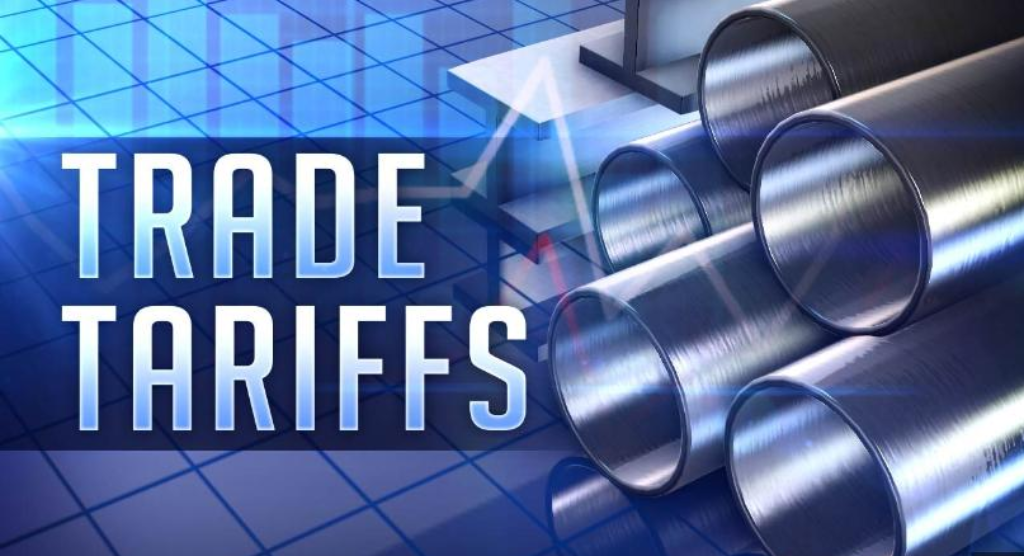
President Trump has claimed on numerous occasions that the tariffs he has imposed on goods from China, Europe, Canada, Mexico, and elsewhere have helped make the economy stronger. As The New York Times notes, this is definitely not the case:
President Trump threatened over the weekend to re-escalate his trade war with China, by raising tariffs on nearly all Chinese imports. He implied the move would not hurt the American economy and said that the tariffs he has already imposed “are partially responsible for our great economic results” in the United States.
Almost no evidence supports his claims.
Mr. Trump’s advisers expanded the argument on Monday, saying that the 3.2 percent economic growth recorded in the first quarter of this year — including a positive contribution from exports — is proof that the president’s hard-line trade policies are helping the economy.
“There’s no question that some of the trade policies helped in the G.D.P. number,” said Steven Mnuchin, the Treasury secretary.
Technically speaking, the secretary is right: Net exports added to growth in the first quarter, according to the preliminary number the Commerce Department released last month. But that is not an indication that tariffs are helping the economy overall.
The fact that Mr. Trump and his team appear to believe otherwise could be a smart negotiating tactic with China — it could give credence to the idea that they are prepared to escalate the trade war further if their demands are not met.
But claiming to have a stronger economic hand could also undermine Mr. Trump’s position and set the economy — and financial markets — up for an unpleasant surprise if his bluff is called.
The author of the piece, economics and business reporter Jim Tankersley goes on to note several piece of evidence that disprove the President’s argument that his trade policies are helping the economy. The first argument he puts forward is the simple and unsurprising fact that there is clear evidence that Trump’s tariffs hurt economic growth last year:
The formula for calculating the size of the American economy, gross domestic product, is deceptively simple. It combines a number of economic metrics, including consumer spending, business investment and government spending. And it also factors in the difference between the value of what the United States exports and what it imports.
For more than 40 years, that difference has been negative as America bought more foreign goods and services than it sold. Imports exceeded exports, which means, technically speaking, that America’s G.D.P. was lower because of trade.
This is an accounting relationship, called the trade balance, and it does not tell the full story of economic activity. If consumers are paying a lot to import an amazing new widget from abroad, which American manufacturers cannot or will not produce, they are getting a benefit from that, even though the increase in imports hurts the growth number.
There are multiple factors for why the size of the trade balance fluctuates, including the relative strength of trading partners’ economies and currencies — and how much money people spend or save in different countries.
(…)
Mr. Trump hates the trade deficit, and he has repeatedly said that his tariffs will reduce it. In 2018, they did not. The deficit hit a nominal record. It subtracted two-tenths of a percentage point from G.D.P. growth, the Commerce Department calculated.
The Gross Domestic Product of the United States is roughly $19.4 trillion dollars. This means that the increased trade deficit due to Trump’s tariffs subtracted roughly $38.8 billion from overall G.D.P.
Next, Tankersley notes that the one positive number in the first quarter GDP report related to trade appears to be a blip rather than a sign of a long term trend:
For starters, it is preliminary. The Census Bureau has not yet reported trade statistics for March; the most detailed numbers out so far are through February. Growth numbers are notoriously volatile and subject to revision.
(…)
More important, the trade balance seems to have been helped by special circumstances, many of them related to Mr. Trump’s trade war. Last year, as retaliation for Mr. Trump’s tariffs, China stopped buying soybeans from American farmers. That resulted in a big hit to American soybean exports. But as the two countries resumed trade talks, the Chinese restarted some soybean purchases as a good faith measure.
You can see that restart in the first-quarter data. Exports of “food, feed and beverages,” which include soybeans, jumped 45 percent, after falling by nearly 50 percent in the fourth quarter of 2018. That category by itself accounted for nearly two-thirds of the growth in exported goods.
There is a similar pattern when it comes to imports.
Finally, Tankersley rebuts the claim that tariff revenues have somehow boosted the economy:
Most economists argue the opposite — that tariffs reduce economic activity by raising prices for consumers. That reduction thus far from the China tariffs is most likely small, but it is, in those calculations, almost certainly a reduction, and not a rise.Despite Mr. Trump’s proclamations, “China” is not paying the cost of the tariffs. Businesses and consumers — mostly American — are like the owner and customers of your friendly neighborhood lighting showroom. Also, tariffs have not had a huge impact on prices yet, not because China is bearing them, but because, thus far, the additional taxes Mr. Trump has imposed on Chinese imports have not been large enough to budge the inflation rate more than a tenth of a percentage point.
The Federal Reserve Bank of San Francisco estimates that Mr. Trump’s initial wave of China tariffs raised consumer prices by 0.1 percentage points — and that a second wave would quadruple that effect. That means if Mr. Trump follows through and raises tariff rates, the pain could be much more noticeable to shoppers.
In addition to the alleged positive impact of increased tariffs on the economy, which as we have seen is basically non-existent, the President also likes to brag that his policies have resulted in saving American jobs and in bringing manufacturing jobs back to the United States. All of the available evidence indicates that this too is largely untrue. So far at least, there is no evidence of any major American steel producer having announced that they would be bringing jobs back to the United States, or that they would be increasing hiring the wake of the President’s tariffs. Indeed, as The Washington Post reports, the tariffs that have been imposed have cost Americans nearly a million dollars for each job allegedly saved or saved:
President Trump has shown little interest in removing the steel and aluminum tariffs he imposed more than a year ago despite growing evidence Americans are paying a hefty price for these tariffs and increasing pressure from Republicans in Congress to remove them.
U.S. consumers and businesses are paying more than $900,000 a year for every job saved or created by Trump steel tariffs, according to calculations by experts at the Peterson Institute for International Economics. The cost is more than 13 times the typical salary of a steelworker, according to Labor Department data, and it is similar to other economists’ estimates that Trump’s tariffs on washing machines are costing consumers $815,000 per job created.
“It’s very high. It’s arresting,” said Gary Hufbauer, a senior fellow at the Peterson Institute who did the steel tariff cost calculation. “The reason it’s so high is that steel is a very capital-intensive industry. There are not many workers.”
Trump has said repeatedly that the metals tariffs are necessary for national security, for well-paying jobs and for leverage in trade negotiations. There was hope among Republicans and business leaders that Trump would remove the tariffs — at least on Canada and Mexico — once the negotiations over the U.S.-Mexico-Canada trade agreement, known as USMCA, were done. But the tariffs remain, a warning sign for Chinese leaders who want Trump to remove his tariffs on their country’s products as part of the deal the two sides are negotiating.
Supporters of Trump’s tariffs, such as the Alliance for American Manufacturing, counter that more than 12,700 well-paying jobs have been created or saved at steel and aluminum factories since the president put this policy in place in March of 2018. They also point to substantial amounts of investment in U.S. metal mills that should benefit the nation for years to come, including $1 billion that was just announced at a U.S. Steel plant outside Pittsburgh
“Congrats to @U_S_Steel for investing $1+ BILLION in America’s most INNOVATIVE steel mill. 232 Tariffs make Pennsylvania and USA more prosperous/secure by bringing Steel and Aluminum industries BACK. Tariffs are working. Pittsburgh is again The Steel City. USA economy is BOOMING!” Trump tweeted last week.
Many economists and business leaders point out that jobs in steel-using industries outnumber those in steel production by about 80 to 1, according to experts at Harvard University and the University of California at Davis.
Trump has claimed that other countries are paying the tariff bill, but evidence shows the tariffs are taxes paid by Americans. U.S. companies that buy metals are either absorbing higher costs or passing them along to consumers. General Motors and Ford said Trump’s tariffs have cost them $1 billion each.
“The consumer pays for this in the end. They just don’t always recognize it,” said James Knott Jr., chief executive of Riverdale Mills in Northbridge, Mass., which makes wire mesh products for everything from fences to commercial fishing nets. “These 232 tariffs protect my foreign competition rather than protecting me.”
(…)
[E]Vidence is growing that the metals tariffs are starting to bite. Last year U.S. manufacturing companies went on a hiring spree, adding the most new employees in more than two decades as the strong economy caused demand to rise. But since the start of the year, manufacturing job growth has cooled. From February to April, U.S. manufacturers added 12,000 net new manufacturing jobs, the weakest gains in the sector since before Trump took office.
Hufbauer and Euijin Jung of the Peterson Institute calculated that every steel job saved is costing U.S. consumers over $900,000 because U.S. companies have been paying about 10 percent more for steel since Trump’s tariffs went into effect. The total additional cost to the economy is about $11.5 billion a year.
Finally, as Bloomberg notes, Trump’s claim that China is paying for the tariffs is quite simply untrue:
President Donald Trump is justifying raising tariffs on Chinese imports on grounds they are helping the U.S. economy and are mostly paid by China. The opposite is true, economists say.
According to data from U.S. Customs and Border Protection, almost $15.3 billion in duties imposed by the Trump administration last year were assessed on imported goods from China as of April 10. Actual collections could lag and be lower with refunds and other factors.
While Trump has suggested on Twitter and in public comments that tariffs are somehow being charged to or paid by China, economists say that’s misleading. U.S. importers are responsible for the duties, and ultimately U.S. businesses and consumers pay through higher costs, they say.
“Our results imply that the tariff revenue the U.S. is now collecting is insufficient to compensate the losses being born by the consumers of imports,” a study published in March by economists from the Federal Reserve Bank of New York, Princeton University and Columbia University concluded.
(…)
Trump announced the increase in duties in a tweet Sunday saying “the Tariffs paid to the USA have had little impact on product cost, mostly borne by China.” He has previously suggested that China is paying all but about four of 25 percentage points in duties because Chinese companies would reduce their prices in response to the tariffs.
But those numbers appear to be estimates from a 2018 report based on historical data, said David Weinstein, an economics professor at Columbia University and one of the authors of the March study. Actual data on tariffs and trade from 2017 and 2018 showed that foreign firms didn’t lower their prices at all, so the full impact was born by U.S. firms and consumers, he said.A separate paper published in March by economists Pinelopi Goldberg, the World Bank’s chief economist, Pablo Fajgelbaum of UCLA, Patrick Kennedy of the University of California, Berkeley, and Amit Khandelwal of Columbia Business School also found that consumers and U.S. companies were paying most of the costs of Trump’s tariffs.
It also went a step further: After factoring in the retaliation by other countries, it concluded the main victims of Trump’s trade wars had been farmers and blue-collar workers in areas that supported Trump in the 2016 election.
“Workers in very Republican counties bore the brunt of the costs of the trade war, in part because retaliations disproportionately targeted agricultural sectors,” the authors wrote.
All of this, of course, is just the latest development in a trade war that began with the steel and aluminum tariffs that President Trump announced in March of last year, but its roots go back much further. From the moment he entered the race for President, Trump was attacking President Obama and his predecessors for what he claimed were a number of “bad trade deals” that were hurting American businesses while benefiting overseas competitors, and he singled out China as the focus of his attacks on this issue. This mirrors almost exactly the rhetoric that Trump used in the 1980s and 1990s when he was first becoming a “celebrity.” The only difference between then and now is that his target back then was Japan rather than China. Given that this was a time when Japan was proving to be a strong competitor and, much to the chagrin of people like Trump, Japanese investors were buying up real estate in Manhattan and other locations that he was seeking to do business. While the target was different there was really no difference between what Trump was saying back then and what he’s saying now, and in both cases, it is utterly economically illiterate.
In any case, it didn’t take long for the Chinese to retaliate against Trump’s steel and aluminum tariffs, and it didn’t take long after that for the U.S. economy to start feeling the impact of the tariffs and the President’s widening trade war. For example, just two months after the steel and aluminum tariffs were announced, The Wall Street Journal reported that prices for both foreign and domestic steel and aluminum were increasing and this was having a negative impact on manufacturers that rely on these raw materials for their products. Other reports have indicated that American pork farmers were increasingly nervous about their overseas business with nations like China due to the fact that Beijing was threatening to hit American agriculture with retaliatory tariffs. In Iowa, it was reported that Chinese retaliation for the tariffs could cost soybean farmers $624 million this year alone, with the prospect of larger losses if the retaliation continues beyond this year. This has led many leaders in Iowa and elsewhere, including Senator Chuck Grassley to express concern about the impact of the trade war on Republican fortunes in the fall. This is especially true given the fact that the tariffs seem to be expressly targeted toward Trump voters and middle-class Americans. In the time since then, we have also seen that the tariffs have had a negative impact on other American businesses, and has even led an iconic American brand like Harley-Davidson to announce that they are moving some production overseas in response to the retaliatory tariffs imposed by the European Union. In August, Trump announced a new round of tariffs on Chinese goods and the Chinese responded immediately with another round of retaliatory tariffs. Finally, and most recently, the Administration announced yet another expansion of the trade war, and of course, the Chinese responded accordingly and it is American consumer and businesses that are paying the price for the President’s ill-informed trade policies.
None of this should come as a surprise to anyone with even a cursory familiarity with basic economics. Going all the way back to the days of the father of modern economics, Adam Smith, it has long been recognized that trade wars, tariffs, and protectionist trade policies are bad for the economy and do not deliver either the economic benefits or the job and industry protection that they offer. As Smith and those who followed in his footsteps argued, and as subsequent history has clearly demonstrated, tariffs and protectionist trade policies actually have the effect of increasing prices for consumers, making it harder for domestic businesses to compete in international trade due to the inevitable retaliatory tariffs imposed by targeted countries, and benefiting certain domestic industries while harming those that would benefit from the lower costs and higher supply that would result from lower tariffs and more open trade. There is also plenty of evidence to show that tariff increases have other impacts such as slowing economic growth and increasing international tensions. This last point is emphasized perhaps most emphatically by the use of the term “trade war” because that is effectively what is happening when two nations start imposing retaliatory tariffs on each other. Such policies in the past have also increased tensions in other respects and arguably played a role in the tensions that preceded the many wars that once ravaged continental Europe, including World War One. It’s also worth noting that it was, in part, an American-led embargo that led to the Japanese militarism that led directly to World War Two in the Pacific. In any case, both in theory and in fact the evidence against the benefits of tariffs is quite clear to the point where nearly all economists on both sides of the ideological aisle agree that they are a bad idea and bad policy.
The Trump Administration and its supporters, of course, will probably point to recent economic figures in support of the argument that Trump’s tariffs have not hurt the economy and that they may have actually helped it. The articles quoted above, of course, do a fairly decent job refuting those argument but it does leave open the question of why we haven’t seen more of an impact from the tariffs. One reason for that, obviously, is the fact that the tariffs are a relatively small part of what is a nearly $20 trillion economy. Therefore it may not be readily apparent that the tariffs have retarded economic growth even if only by a small amount compared to the overall economy.
Additionally, the real impact of policies such as tariffs is related to what the great French economist Frederic Bastiat called the idea of the seen and the unseen:
In the economic sphere an act, a habit, an institution, a law produces not only one effect, but a series of effects. Of these effects, the first alone is immediate; it appears simultaneously with its cause; it is seen. The other effects emerge only subsequently; they are not seen; we are fortunate if we foresee them.
There is only one difference between a bad economist and a good one: the bad economist confines himself to the visible effect; the good economist takes into account both the effect that can be seen and those effects that must be foreseen.
Yet this difference is tremendous; for it almost always happens that when the immediate consequence is favorable, the later consequences are disastrous, and vice versa. Whence it follows that the bad economist pursues a small present good that will be followed by a great evil to come, while the good economist pursues a great good to come, at the risk of a small present evil.
The same thing, of course, is true of health and morals. Often, the sweeter the first fruit of a habit, the more bitter are its later fruits: for example, debauchery, sloth, prodigality. When a man is impressed by the effect that is seen and has not yet learned to discern the effects
that are not seen, he indulges in deplorable habits, not only through natural inclination, but deliberately.This explains man’s necessarily painful evolution. Ignorance surrounds him at his cradle; therefore, he regulates his acts according to their first consequences, the only ones that, in his infancy, he can see. It is only after a long time that he learns to take account of the others.
Two very different masters teach him this lesson: experience and foresight. Experience teaches efficaciously but brutally. It instructs us in all the effects of an act by making us feel them, and we cannot fail to learn eventually, from having been burned ourselves, that fire burns. I should prefer, in so far as possible, to replace this rude teacher with one more gentle: foresight.
This is the opening excerpt from Bastiat’s great masterpiece That Which Is Seen And That Which Is Unseen, which I recommend reading at the link. In the essay, he goes on to discuss at great length the impact that ignoring the unseen consequences of economic policy can be, citing examples such as the now famous “Broken Window Fallacy,”
In the case of tariffs, the allegedly positive economic figures and jobs in the steel industry that are allegedly saved or created due to tariffs are seen. What is unseen is the cost of those tariffs to consumers and businesses, the deleterious impact this has on the economy as a whole, the impact that trade wars have on international relations, and the missed opportunities created by the loss of revenue due to higher prices imposed because of tariffs. As we’ve seen, those unseen costs far outweigh any benefits derived from tariffs and trade wars. Donald Trump is famous for saying that “trade wars are good and easy to win,” The truth is that they are bad, and everyone loses.

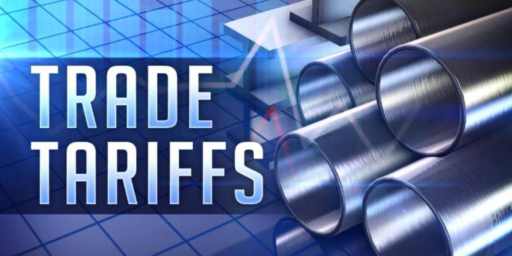
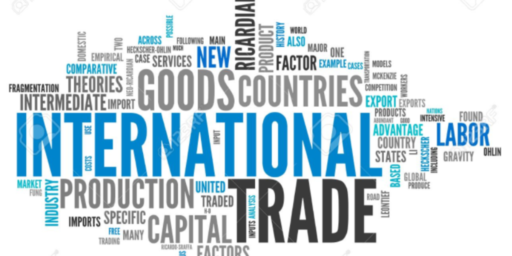
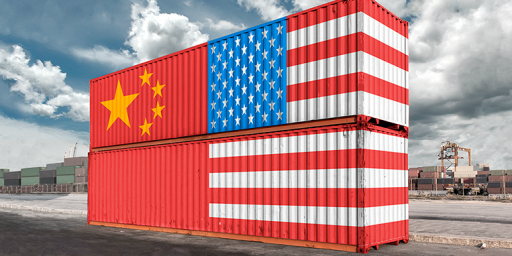
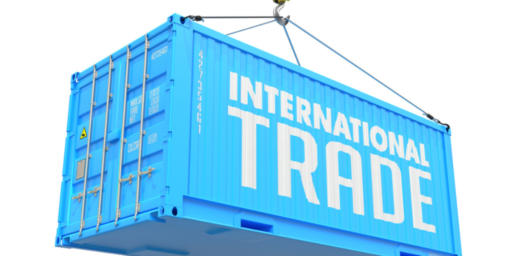
Trump is extremely vulnerable on this issue, or should be/would be if we had a political opposition that didn’t have its head up its own asses. People who are inclined to agree that the Mueller investigation was indeed a witchhunt cannot stand these tariffs. This would be a little clearer if more ears were open and more mouths were shut.
B-but if tariffs are so bad, why did so many countries under US leadership create the World Tariff Organization?
@James Pearce: Nothing will (ahem) pierce the bubble of the Trump cultists. Like every other nasty thing about him, he lies about it and his army of propagandists repeat the lies. You blame the Democrats for this state of affairs?
@reid:
Damn right I do.
65 million racists who love being lied to didn’t vote for Trump. 65 million people who felt they had no better alternative did. And for that, I blame the Democrats.
Which is much easier to do once you accept them as earth bound and imperfect rather than angelic heralds of righteousness.
@James Pearce: Not sure what I was thinking responding to you.
At this point in time that we’re talking about (not when he was elected), he’s a cult hero. His fans live in a bubble.
I don’t accept Democrats as angelic heralds of righteousness. How silly.
@James Pearce: Anyone spouting off about Mueller’s report being a witch hunt have already divorced themselves enough from reality to also talk about how Trump turned the economy around after Obama destroyed it. Those people are chugging the cool-aid and don’t care about reality.
@reid:
See? It’s true! Another way that I heard this said is that experience always gives the test first and teaches the lesson second.
@reid:
He has way more supporters than fans. And they don’t live in a bubble. They live next door.
@Matt:
We thank the Muellerologists for their service. But may we talk tariffs?
trump is kind of used to fighting dirty against people who can’t, or won’t fight back the same way. In his attempt to fight a trade war, he’s finding out that’s not the case.